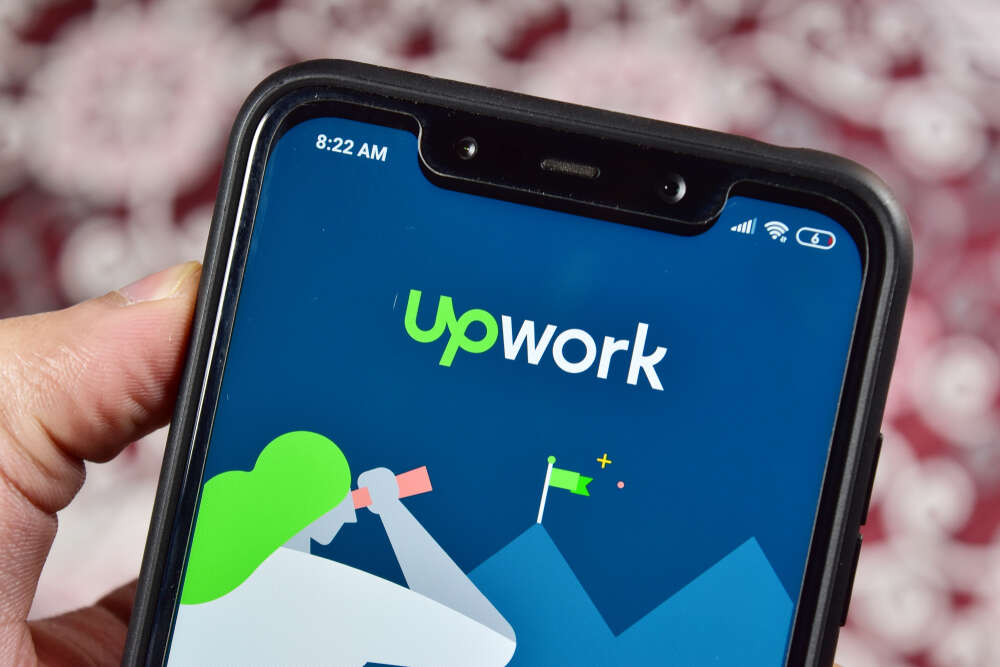
In the past decade, online platforms have transformed the way millions of workers find employment. The headlines have been dominated by the likes of Uber and Deliveroo, which have received blockbuster funding rounds and created a new class of gig economy workers. But freelance and micro-tasking platforms such as Upwork and Freelancer, which allow customers to source workers of various kinds, are on the rise and arguably have even more potential to shape the future of work.
The online labour market has grown more than 60% since the start of 2017, peaking in the middle of the pandemic, according to the Online Labour Observatory’s Online Labour Index (OLI), which measures the usage of online labour through job postings on freelance and micro-tasking platforms.
While demand for online labour dropped off in many sectors at the start of the pandemic, others, including software development, data entry and, more surprisingly, professional services, observed a surge in job listings.
The stellar performance of the tech sector during the pandemic explains why demand for software developers is “stress resilient”, says Fabian Stephany, researcher at the Oxford Internet Institute (OII). The move to remote work has prompted many professionals, such as lawyers or accountants, to offer their services on these platforms for the first time.
Most buyers on these online labour platforms are SMEs, Stephany explains, although the number of medium-sized and large businesses using them is growing. The majority of demand is from the US, the index reveals, which accounts for 43% of jobs ads on freelance and micro-tasking platforms, although this dominance has waned slightly in recent years.
By contrast, supply is concentrated in developing regions of the world. India, Bangladesh, and Pakistan make up more than 55% of online workers, with India supplying almost half the market for software development and tech freelancers, according to the OLI. This is a reflection of trends in the offline economy, as companies have historically offshored work to India where there is a large English-speaking and tech-savvy population, says Stephany.
However, online labour sites are not neutral platforms that distribute work equitably, says Uma Rani, senior economist at the International Labour Office (ILO). They usually allow buyers to specify what kind of workers they want to hire, and from where.
“What we have seen very clearly is that you can design the platform in such a way that one can decide if workers are from a particular age group, [have] a certain political agenda, or are from certain regions of the world,” she says. The platforms can also block workers in particular regions from performing certain tasks or even registering an account, she adds.
Workers are also not paid equally. According to research by the ILO, labour platform workers in developing countries earn significantly less, with a median hourly wage of $2 compared with $4.5 in developed markets.
How will freelance platforms shape the future of work?
Gig economy platforms such as food delivery and taxi apps attract more attention and capital than online labour platforms, in part because they have a ‘winner-takes-all’ business model, says Rani. The average revenue of the three largest taxi and delivery platforms is more than ten times higher than the revenue of online web-based platforms like Appen and Upwork, according to an ILO report on digital labour platforms.
But while online marketplaces for freelancing and micro-tasking are more fragmented there is greater potential for growth, Stephany argues. “We don’t have a big monopoly yet on online freelance markets because there are really different underlying dynamics – for example, they can’t force people to just work for one platform,” he says. “[But] there’s much more potential for the overall freelance market to grow because there’s much more potential for smaller actors to join and maybe deliver something locally.”
As with gig economy platforms before them, this could erode social protections for workers. Currently, only a very small minority of freelance workers are covered by the basic social protection benefits, the ILO found. Workers on microtask platforms are more likely to have social protections, as they often already have full or part-time jobs.
“When people increasingly rely on platforms to be their main source of income, the benefit of flexibility becomes dwarfed by the cost of precarity and lack of social protection,” says Annabelle Gawer, director of the Centre of Digital Economy at the University of Surrey.
While it would be a mistake to “throw away the digital baby with the bathwater”, she says, we are at a critical inflection point for workplace norms, which requires “careful and nuanced” regulation that balances the social rights of workers against the platforms’ incentives for investment and growth.
As the ongoing digital revolution cements the power of these online labour marketplaces, they are increasingly shaping the offline world of work too, says Gawer. “The platforms that we see today may not last forever, but they’re showing us how organisations can take advantage of the current circumstances in terms of technology [and] what is possible in governing relationships with workers,” she says. “What will happen is the [increased] adoption by organisations of techniques of surveillance and monitoring that started off in the world of online work platforms.”
Stephany agrees the labour platform model will increasingly influence how employers manage their own workers. Although they will undoubtedly grow, “I think that online freelance markets will, in the mid-term future, only remain a complement to on-site labour, not a disruptor,” he explains. “Having said that, the platform model itself e.g., allocating work via a two-sided platform market, could be a model of future work within companies.”
That could significantly alter the way in which companies allocate work to their employees. “So, the platform model might really disrupt on-site work,” says Stephany.
Home page image by Funstock/Shutterstock






